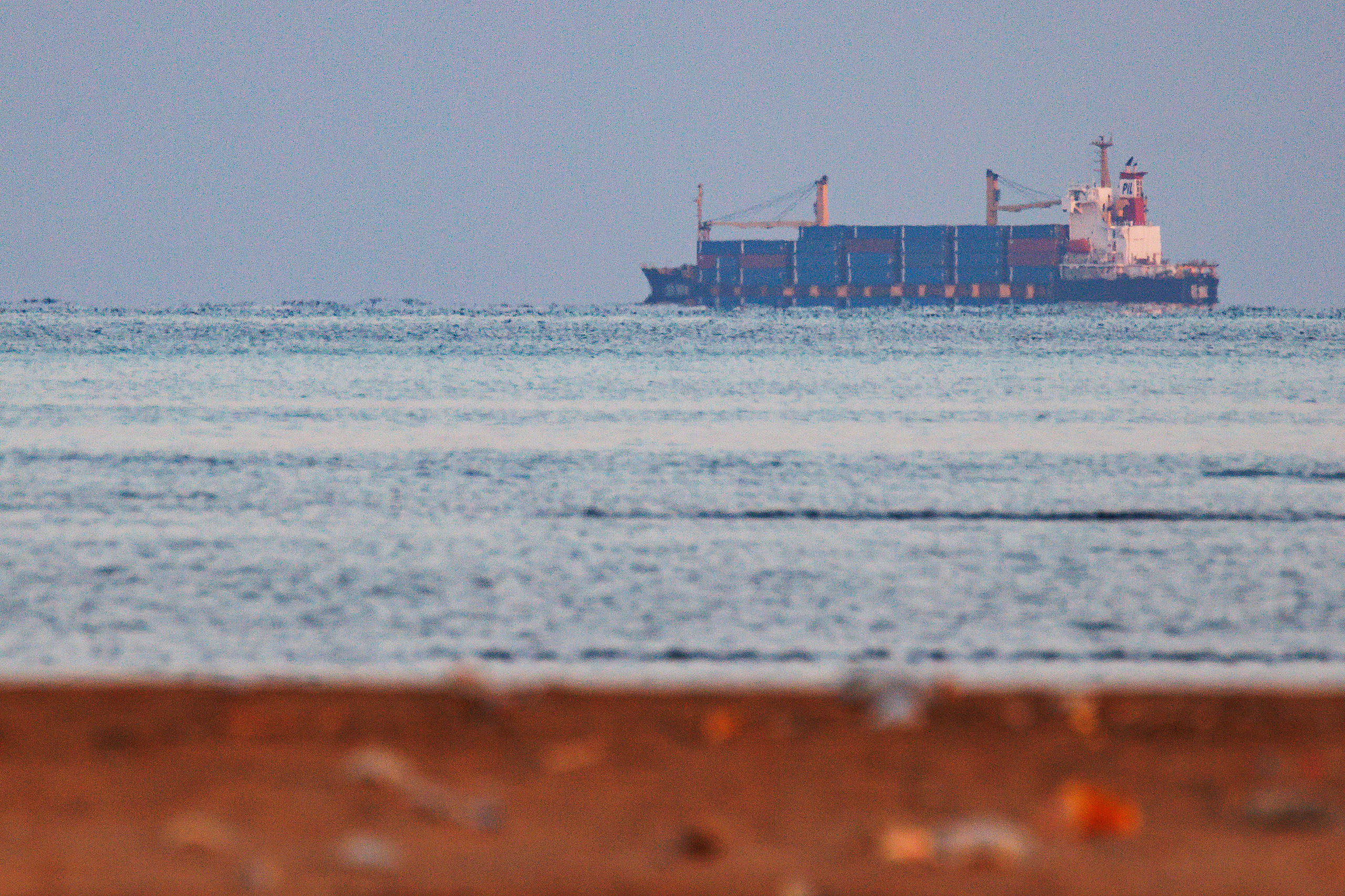It’s now nearly eighty years since the world saw a major naval battle, when the main force of the Imperial Japanese Navy was destroyed at Leyte Gulf in the Philippines in 1944. With the exception of the Falklands war in the early 1980s, there’s been no real naval warfare since then. Indeed, in the current Ukraine war, Russia’s much-feared Black Sea Fleet has been put to flight by a country without a navy. (The few ships Ukraine had were destroyed or captured on the first day of the war.)
In the absence of traditional naval warfare, the rationale for maintaining large naval forces has rested largely on the idea that trade routes must be maintained. Most of the time this argument has relied on an analogue of Lisa Simpson’s tiger-repelling rock — the claim that the very existence of large navies is the reason trade flows so smoothly.
Now, however, the catastrophe in Gaza has spilled over into a conflict in the Red Sea. The Houthi rebel movement in Yemen, backed by Iran and opposed to the United States and Israel, has begun attacking ships in the Red Sea, deterring many from travelling through the Suez Canal. One estimate puts the fall in traffic at 30 per cent.
Despite the claims of naval advocates, the Houthis were not deterred by the presence of the large naval force set up to counter them. Combined Task Force-153 was established in 2022 by the Combined Maritime Forces in the Middle East to “specifically address maritime threats in the Red Sea and the Gulf of Aden.” News reports speculated that the goal of the task force was to counter the Houthi threat.
Evidently, this goal was not achieved. After unsuccessfully attacking Israel itself (in response to the invasion of Gaza, which in turn responded to the Hamas terror attacks, which in turn…), the Houthis began attacking Israeli-owned ships in November, and have since steadily increased their range of targets to include most commercial shipping.
The United States and Britain have responded with an impressive expansion of their naval forces, including a carrier strike group, Typhoon fighter jets and submarine-launched cruise missiles. Houthi drones have been downed and Houthi bases and military launch sites targeted with air strikes.
The effectiveness of this response remains to be seen. In the absence of ground forces, air strikes have rarely compelled an adversary to surrender. And the last attempt to keep the Suez Canal open by force, undertaken by Britain, France and Israel in 1956, ended in a humiliating fiasco which produced the opposite of its intended outcome.
But let’s suppose that the continued presence of this naval force is sufficient to deter or destroy Houthi attackers and allow normal shipping to be maintained. Is this benefit sufficient to justify the required expenditure on naval forces?
If the United States decided not to maintain the forces necessary for an operation of this kind, it could save the cost of one of its eleven carrier battle groups. With a naval budget of US$220 billion a year, that would be a saving of US$20 billion a year.
But what if the canal remained closed? When a land or air route is interrupted by armed conflict, the usual response is to take a longer way around. (The tragic consequences of not doing so were illustrated by the destruction of Malaysia Airlines flight MH17 over Ukraine in 2014.)
In the case of the Suez Canal and the Red Sea, the long way around is via the Cape of Good Hope, an extra distance of around 2000 nautical miles (or about 15 per cent) in the distance from Europe to Asia. About 12 per cent of world trade normally uses the canal, so the average shipping time for all goods would rise by around 2 per cent if the canal were closed. Even for traded goods, shipping costs are only about 7 per cent of the final price, so any impact on global inflation would be imperceptible.
We can look more directly at the costs by considering estimates that the cost of a round trip from Europe to Asia would increase by “up to” US$1 million. With about 8500 round trips per year, that’s a cost of at most US$8.5 billion. On that figure, even if the threat posed by the Houthis remains indefinitely and the current force manages to keep shipping flowing, the costs to the United States would far outweigh the benefit to global shipping.
But is protecting the shortest routes for global shipping so crucial an objective that it can’t be compromised, regardless of costs? It’s worth considering some alternatives.
Protecting global shipping is a form of foreign aid. For the cost of a carrier battle group the United States could nearly double its entire overseas development aid budget, saving many millions of lives. Alternatively, the money could be spent at home, for example on repairs to America’s crumbling transport infrastructure system or on making its schools safe for children to attend.
At least the United States is big enough and rich enough to afford an annual US$20 billion subsidy to the shipping industry. The same can’t be said for Britain, a smaller and poorer country experiencing a public sector crisis. Role-playing as a global maritime power is an exercise in imperial nostalgia Britain can scarcely afford.
Similar points apply to Australia, where we have spent around $500 billion this century on our navy, largely justified by the supposed need to protect vital shipping routes. We would be better off spending much of this money on improving our domestic transport system or meeting vital social needs in health and education.
More generally, the only use of military and naval force that should be treated as unquestionably necessary is self-defence against invasion. All the other supposed benefits — creating jobs, projecting power and protecting trade routes — should be subject to the same cost–benefit test as other expenditure. Many, perhaps most, military expenditures would fail that test. •




